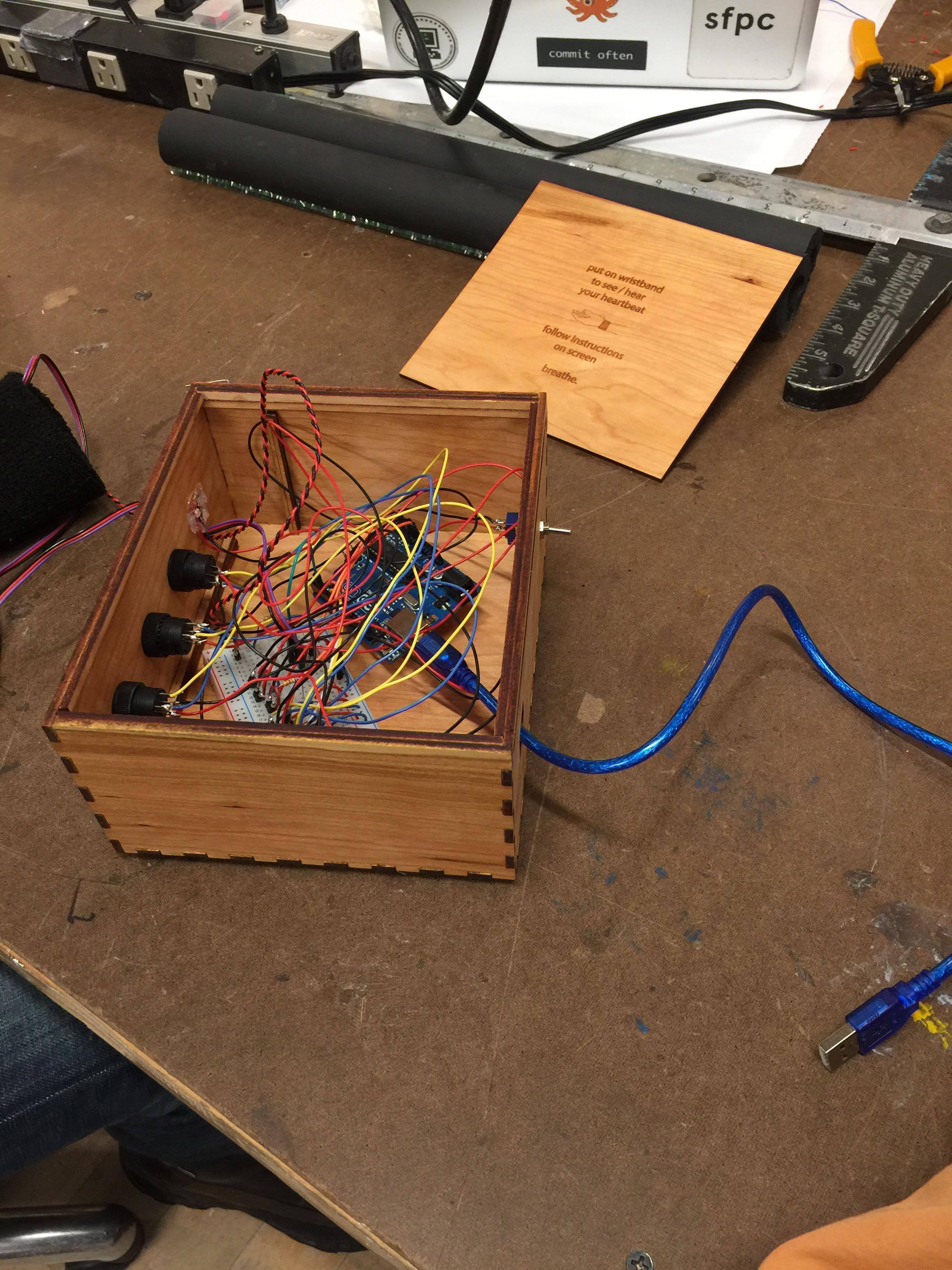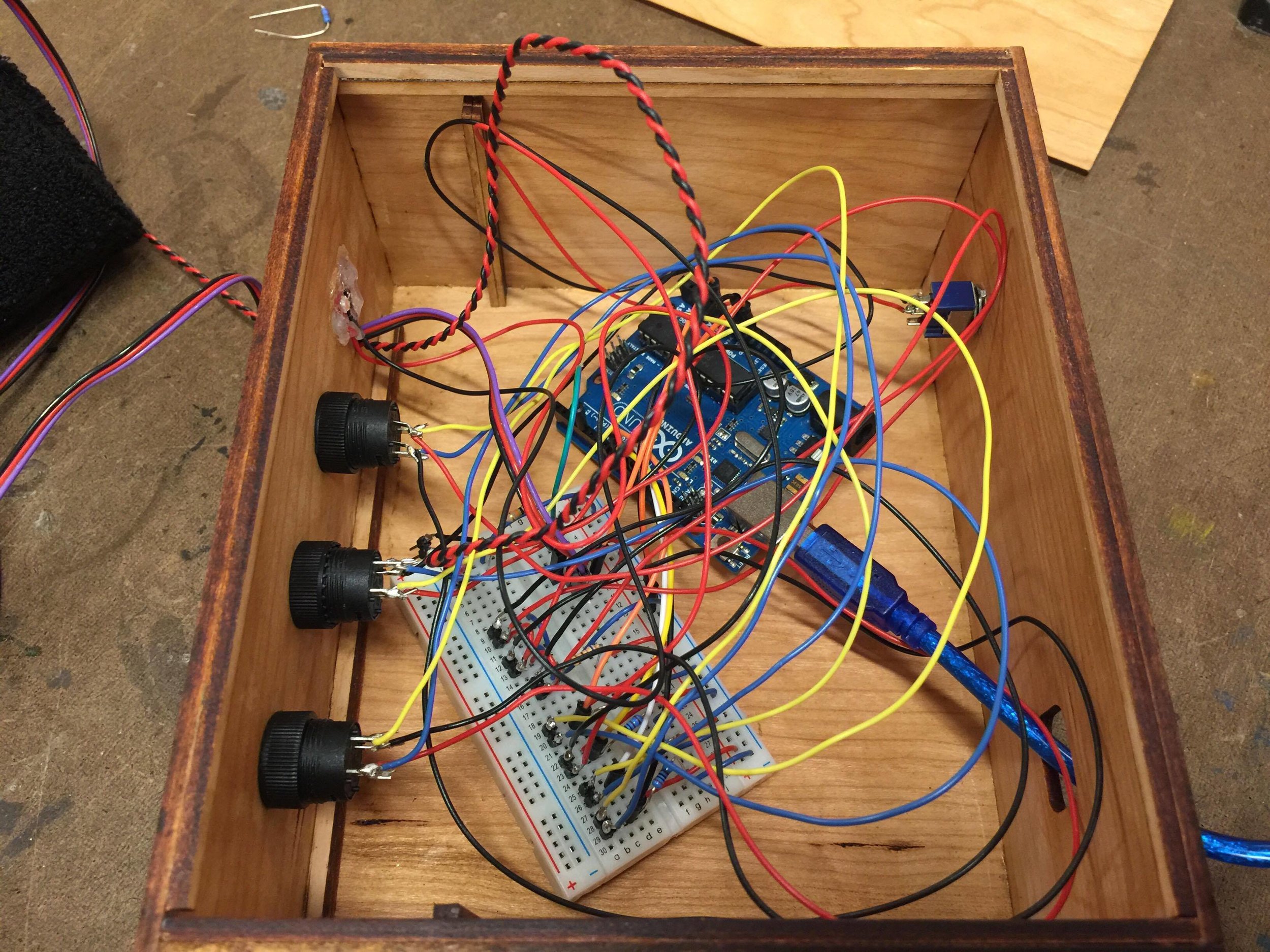Here is another reference for cutting curves with a bandsaw.
This project felt like a a good balance of not too hard but also a little more challenging in its design, and I also like the way these look. It's more of a cheese board. Maybe I can use these as gifts if it goes well, too. My first thought was to make 5 boxes that could potentially be used as enclosures for future projects, but when looking at tutorials I decided that was too complicated for the time I have to finish these in, and also maybe too ambitious for a first project in the shop.
I will update again after I go to Home Depot to get the wood, and after I attempt to cut out the first board in the shop...
Update on 11/6:
I was unable to find untreated wood on Saturday, so I didn't end up coming into ITP. I drove to Home Depot and had no luck there, then went to a place that said it was a lumber yard in Bushwick but it turned out to be hardware store and they only sold pine which they said had chemicals in it. But I did get some pine just to do a test project on or in case I needed it and some other things (sandpaper, dust masks).
Then I came into ITP and tried to start a different project, sliding bookends, in the shop on Sunday night. However the bandsaw had just broken and I was counting on using it. I realized I could probably use the other main saw that I used to cut the boards into pieces, carefully chipping away at it to make a slot for the bookends (which are supposed to fit on a bookshelf and slide back and forth). But first I tried the smaller meter(?) saw and made some really funky cuts and ended up having to put my first attempts in the scrap bin.
I realized that it's difficult to count on using certain tools and that it is important for assignments at least to start as soon as possible and also to be flexible in terms of what I am making.
In the end I decided to back to trying to make the cutting boards.
My friend asked someone she knew who knew about places to find untreated wood, and as it turns out he sent a super helpful list of places in the city to check out (a couple of these are already on the Intro to Fab list of resources, but the other two were not):
Prince Lumber
618 W 47th St, New York, NY 10036
(212) 777-1150
LeNoble Lumber Co., Inc.
38-20 Review Ave, Long Island City, NY 11101
(212) 246-0150
Rosenzweig Lumber Corporation
801 E 135th St #1, Bronx, NY 10454
(718) 585-8050
Dykes Lumber
43-01 9th St, Long Island City, NY 11101
(718) 784-3920
I ended going to LeNoble Lumber Co. in LIC this morning, and it is an incredible warehouse full of every kind of wood you could think of. I got some Maple (most recommended for cutting boards), Red Oak, Sepale, and another kind I forget the name of which I will add to this post later [*Cherry], in a few different thicknesses, thinking ahead about making enclosures later this semester and also just about how difficult it was just to get the wood this time around and how it would be nice to have reserves...
Since the bandsaw may still be broken I might try to simplify the design to some square cutting boards which I will sand down.. Not sure without this if this satisfies the requirement of a multi step process -- I would cut it on the saw and then use the belt sander, and if the belt saw is working I would also use it to create rounded corners ideally, then also oil it them with a food safe mineral oil.
I did use the meter saw on a project that I abandoned, and haven't found a reason to use the drill press for this yet...Also thought about making bookends in a more traditional way that screw together using dowels, so if the cutting boards don't work I will do that instead. I was just excited about making the cutting boards because I could use them as gifts, and I would also prefer to have one of those than the book ends! But am trying to think of a way I can add more steps to the cutting board, such as adding a juice trough, or a hole somewhere, especially if I am able to shape a handle onto it.
I'm now thinking of mostly following this tutorial... and finding a way to customize it somehow.
Update on 11/7:
I ended up making the cutting boards (which I am now calling cheese boards, because they are small!) Instead of using the band saw, which had been fixed, I discovered with some help from someone in the shop that I could use the left side of the more intense part of the belt sander (what is that called?) to chip or eat away at the wood, molding it into the cheese board shape after I cut it into 12" x 8" rectangles using the saw. I drew an outline in pencil on the boards and then started to sand away at them, pushing them in at a side hard angle to cut out the handles, which produced a lot of dust but not as much as I expected. I ended up using the Cherry wood (the one I forgot before) because I liked its grain and it seemed very high quality, and it was also recommended as one of the boards suitable for a cutting board, specifically I found a few cheese boards made with cherry wood. It felt like very fine wood and was easy to sculpt with the sander.
I spent around 2-3 hours in the shop to get them to this point, planning them out and using the saw and the sander:




































